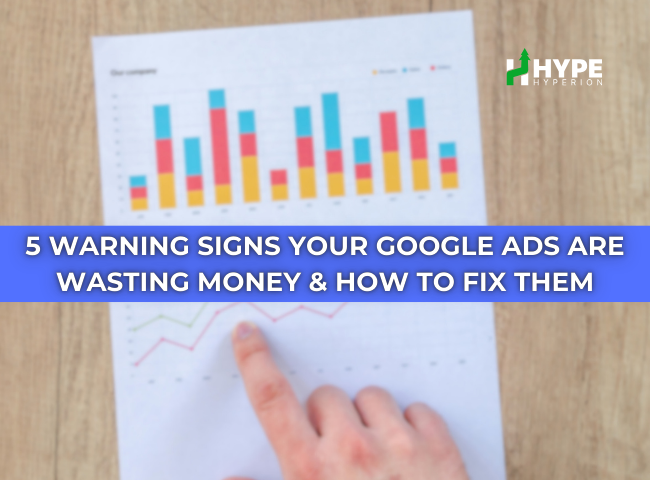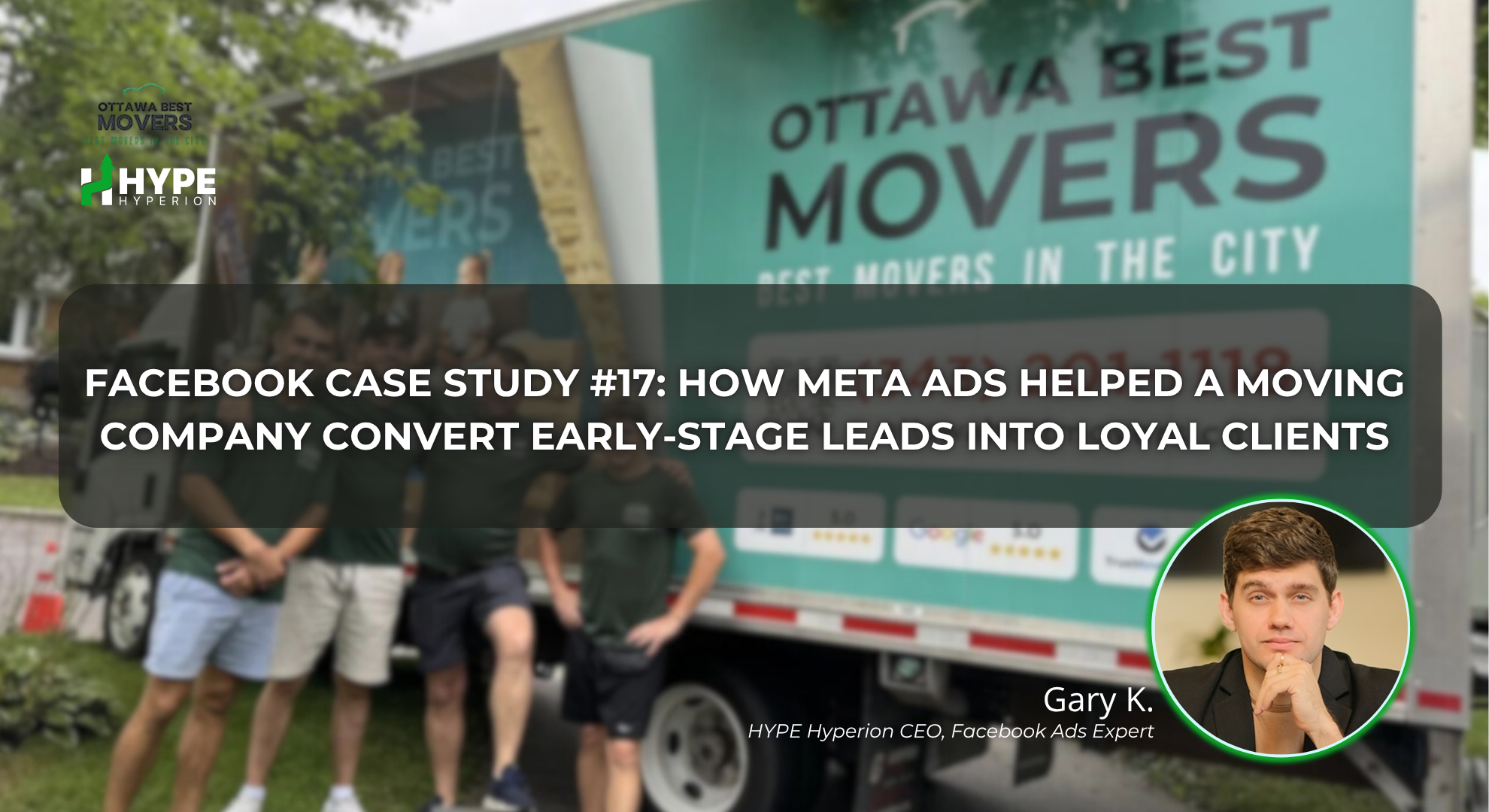5 Signs Your Google Ads Aren’t Performing & How to Fix Them
Google Ads can be a powerful tool for expanding your business and reaching new audiences. However, if your campaigns aren’t optimized, Google Ads can quickly turn into a budget drain with little return. Many marketers overlook specific pitfalls that can lead to underperforming ads, ineffective targeting, and high costs. In this article, we’ll explore five warning signs that indicate your Google Ads may be wasting money, along with actionable steps to get your campaigns back on track for optimal results.
Sign #1: Low Click-Through Rate (CTR)
A low Click-Through Rate (CTR) is one of the primary indicators that your ad may not be resonating with your audience. CTR measures how often people who see your ad click on it, providing insight into your ad’s relevance and appeal. A low CTR often suggests that your ad copy might not be aligned with what users are searching for, or it lacks a strong enough hook to capture attention. When CTR is low, you’re essentially paying for impressions without meaningful engagement, which can lead to wasted ad spend over time.
To improve CTR, it’s crucial to create ads that speak directly to the needs and intentions of your target audience. This involves crafting ad copy that is both compelling and clear, with a call-to-action (CTA) that encourages immediate engagement. Additionally, using highly relevant keywords that match the search intent of your audience can create a cohesive ad experience that drives clicks. Ad extensions, such as sitelinks and callouts, also play a role in increasing CTR by providing additional value and context to potential customers, making it easier for them to engage with your ad.
Sign #2: High Cost-Per-Click (CPC) Without Results
Another clear warning sign of underperformance is a high Cost-Per-Click (CPC) that doesn’t yield satisfactory results. High CPC can be particularly concerning when conversions are minimal, as it suggests that you’re spending a significant portion of your budget on clicks that don’t lead to revenue. This issue often arises from overly competitive keywords, broad targeting, or a mismatch between ad copy and audience expectations.
To address high CPC, evaluate your current bidding strategy and consider alternatives that align with your campaign goals, such as automated bidding options. Automated strategies like Target CPA (Cost Per Action) can help to balance spending while focusing on conversion-driven metrics. Furthermore, reviewing your keyword strategy and incorporating negative keywords can be a game-changer. Negative keywords prevent your ads from appearing in irrelevant searches, focusing your budget on audiences more likely to convert. Additionally, targeting long-tail keywords—more specific keyword phrases with lower competition—can lower CPC by reducing competition and attracting more qualified traffic to your ads.
Sign #3: Poor Conversion Rate
A low conversion rate is often one of the most frustrating issues because it suggests that users are clicking on your ads but not completing the desired action. Poor conversion rates can be attributed to various factors, such as a disconnect between the ad and the landing page, an overly complicated checkout process, or unappealing offers. If people are clicking but not converting, it’s time to examine the user journey from start to finish to identify where you may be losing them.
Improving conversion rates requires a seamless alignment between your ad and landing page. When users click on an ad expecting a specific solution or offer, the landing page should immediately reflect that expectation. Any friction in the user experience, such as slow page loading times or a cluttered layout, can deter potential customers. By optimizing the landing page to be clear, concise, and directly relevant to the ad, you enhance the likelihood of conversions. Adding trust indicators like testimonials, secure checkout badges, and an easy-to-navigate layout can further increase user confidence and motivate them to take action.
Sign #4: High Bounce Rate on Landing Pages
A high bounce rate indicates that users click on your ad but leave the landing page almost immediately. This issue usually signals a disconnect between your ad’s promise and the actual content of the landing page. When visitors don’t find what they’re expecting, they’re more likely to exit quickly, resulting in high bounce rates and wasted ad spend. Essentially, you’re paying for clicks that don’t yield any engagement or sales.
To fix this, ensure that your landing page is highly relevant to the ad copy and keywords that brought users there. If the ad promises a specific product, offer, or solution, the landing page should instantly reflect that promise in a visually appealing and clear format. Additionally, keeping landing pages simple, removing unnecessary distractions, and guiding users toward a single clear CTA can improve engagement and reduce bounce rates. Enhancing page load speed is another critical factor, as users are more likely to leave if the page doesn’t load quickly. Making these adjustments ensures that users find what they need, leading to lower bounce rates and higher engagement.
Sign #5: Ineffective Targeting
Effective targeting is the backbone of any successful Google Ads campaign. When your ads target too broad an audience or miss key demographics, you risk reaching users who are less likely to convert, leading to high costs and low ROI. If you notice that your ads are drawing in large volumes of irrelevant traffic, it may be a sign that your targeting needs refinement.
Refining your audience targeting can greatly improve campaign performance. Google Ads offers a range of targeting options, including demographic targeting, geographic targeting, and remarketing lists. Narrowing down your audience by selecting specific age groups, locations, or interests relevant to your service or product can help reach users more likely to engage. Additionally, remarketing to users who have previously interacted with your brand can boost conversions by re-engaging interested audiences. By tailoring your targeting parameters, you reduce budget waste and attract high-quality traffic that is more likely to convert.
How to Turn Wasted Ad Spend into Profitable Results
Each of these issues—low CTR, high CPC, poor conversion rates, high bounce rates, and ineffective targeting—can gradually drain your ad budget if left unaddressed. By identifying these warning signs and implementing strategic adjustments, you can transform your Google Ads from a costly expense to a valuable asset. Regularly reviewing performance metrics and optimizing campaigns allows for more effective budget allocation, better targeting, and improved ad relevance. In the long term, these efforts will ensure your Google Ads not only reach the right audience but also deliver meaningful results that support your business growth.


